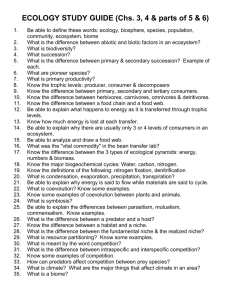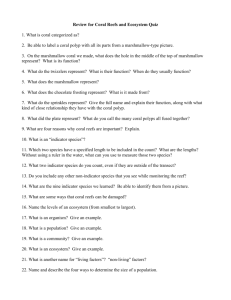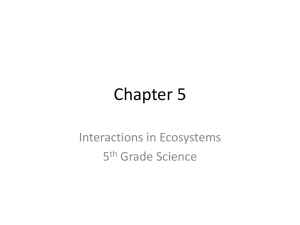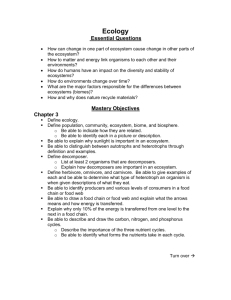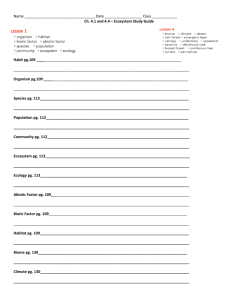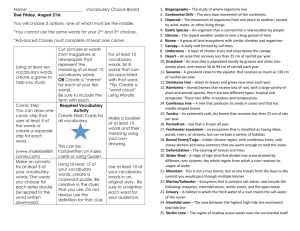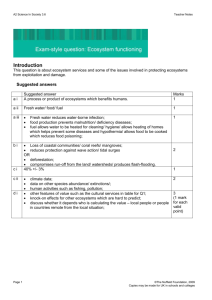Name Review Climatograms Part 1: Graph Analysis 1. Name the 6
advertisement
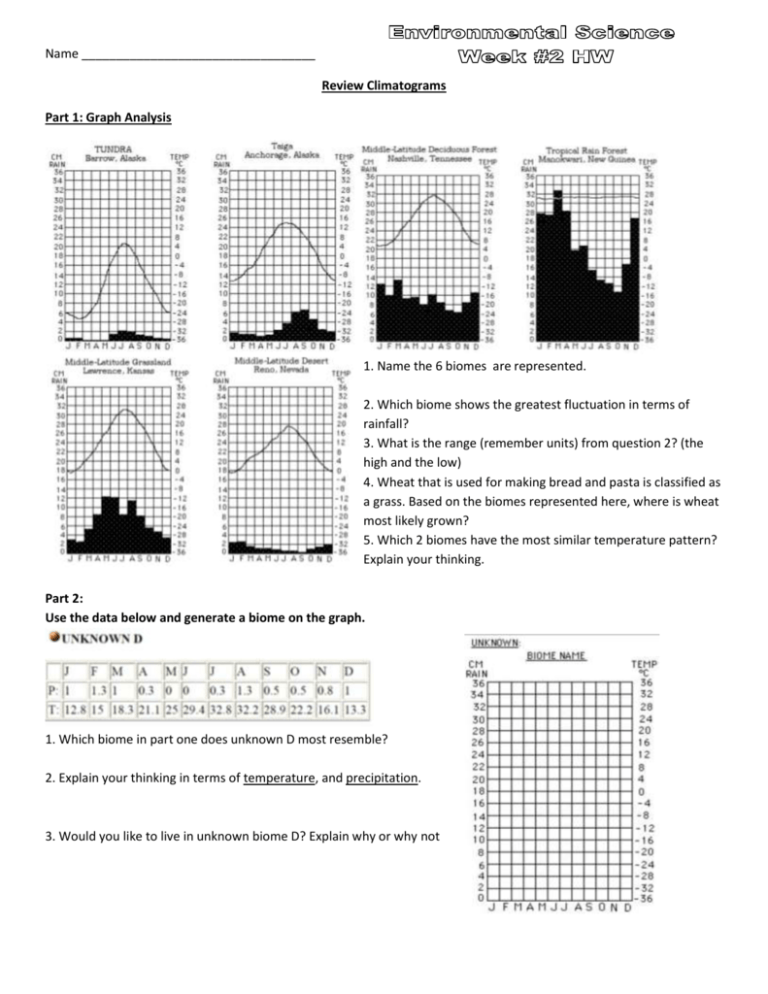
Name __________________________________ Review Climatograms Part 1: Graph Analysis 1. Name the 6 biomes are represented. 2. Which biome shows the greatest fluctuation in terms of rainfall? 3. What is the range (remember units) from question 2? (the high and the low) 4. Wheat that is used for making bread and pasta is classified as a grass. Based on the biomes represented here, where is wheat most likely grown? 5. Which 2 biomes have the most similar temperature pattern? Explain your thinking. Part 2: Use the data below and generate a biome on the graph. 1. Which biome in part one does unknown D most resemble? 2. Explain your thinking in terms of temperature, and precipitation. 3. Would you like to live in unknown biome D? Explain why or why not Part 3 Ecosystem: Read the story below and follow all directions Coral Reef All organisms in an ecosystem are connected and are all necessary for keeping the ecosystem healthy. Humans can disrupt this balance in an ecosystem. Activities like overfishing, hunting top predators or causing climate change and ocean acidification can break down the connections in an ecosystem . Today, you will learn that natural changes in the environment can also impact the balance of organisms in an ecosystem. The ocean is always changing and the water is always moving. Sea temperature can change. A strong current may bring cold water or a new species in to an ecosystem. Just like seasons on land, things change seasonally in the ocean. Nutrients may be most abundant in the spring and phytoplankton will bloom just like plants do on land in the spring. The coral reefs off of Morea (in the middle of the Pacific about halfway between here and Australia) are a diverse ecosystem with little human impact. Starting in 2007, the sea star called “crown of thorns” (called COTs for short) had a population spike and increased in number dramatically. These sea stars eat coral. Can you imagine what happened to the coral reefs? Plot the data below to find out. (Hint: Put “Year” on the X-axis. Put # of COTs on the Y-axis. On the right side of the graph, make another Y-axis that says “% cover” and plot coral and algae.) Your graph will have 3 lines! Year 2005 2006 2007 2008 2009 2010 # COTS per 250m 0 0 1 5 3 0 % algal cover 60 60 65 70 75 90 % coral cover 40 40 35 20 10 5 1) What happened to the coral as the COTS increased? Explain using evidence from the graph. 2) What happened to the algae as the COTS Increased? Explain using evidence from the graph. 3) What other information would you want to know to understand the full story?
